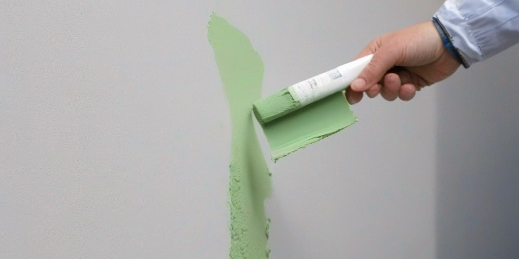This wall paint cleans itself and breaks down harmful substances

A ground-breaking wall paint developed by scientists at the Vienna University of Technology enables the self-cleaning and chemical degradation of air pollutants. This innovative solution not only solves the problem of frequent renovations, but also helps to improve indoor air quality, which is in line with sustainable living and environmental principles.
Researchers at the Vienna University of Technology have developed a wall paint that cleans itself through exposure to sunlight and can chemically break down pollutants from the air. It is common knowledge that wall paints get dirty quickly and need to be replaced regularly. In addition, we are still struggling with air pollutants in our interiors. The need to renew paint regularly is at odds with sustainable living and environmental principles. The research team from the Vienna University of Technology and the Università Politecnica delle Marche in Italy has developed a solution to this problem: A wall paint that cleans itself under the influence of sunlight and can also break down air pollutants.
Nano titanium oxide particles enable new breakthroughs
Many people dream of a wall paint that cleans itself. This dream could now finally become a reality. The key to this groundbreaking innovation lies in the integration of specially modified titanium oxide nanoparticles into the paint. These tiny particles utilise the catalytic power of light to not only attract pollutants from the air, but also effectively break them down. This not only keeps the air cleaner, but the wall colour also retains its beauty and purity over a longer period of time. “For years, people have been trying to use special wall paints to purify the air,” explains Prof Günther Rupprechter from the Institute of Materials Chemistry at TU Wien. “Titanium oxide nanoparticles are particularly promising here, as they can bind and break down a variety of pollutants.” The pollutants that can be removed include household chemicals or emissions from building materials and furniture. Until now, conventional titanium oxide particles had to be activated with UV light in order to develop their cleaning effect – a requirement that is difficult to fulfil indoors. The research team has succeeded in modifying the particles so that they can already be activated by the broader spectrum of visible sunlight. This was achieved by adding phosphorus, nitrogen and carbon to the titanium oxide particles, which enables them to break down pollutants even without direct UV irradiation.